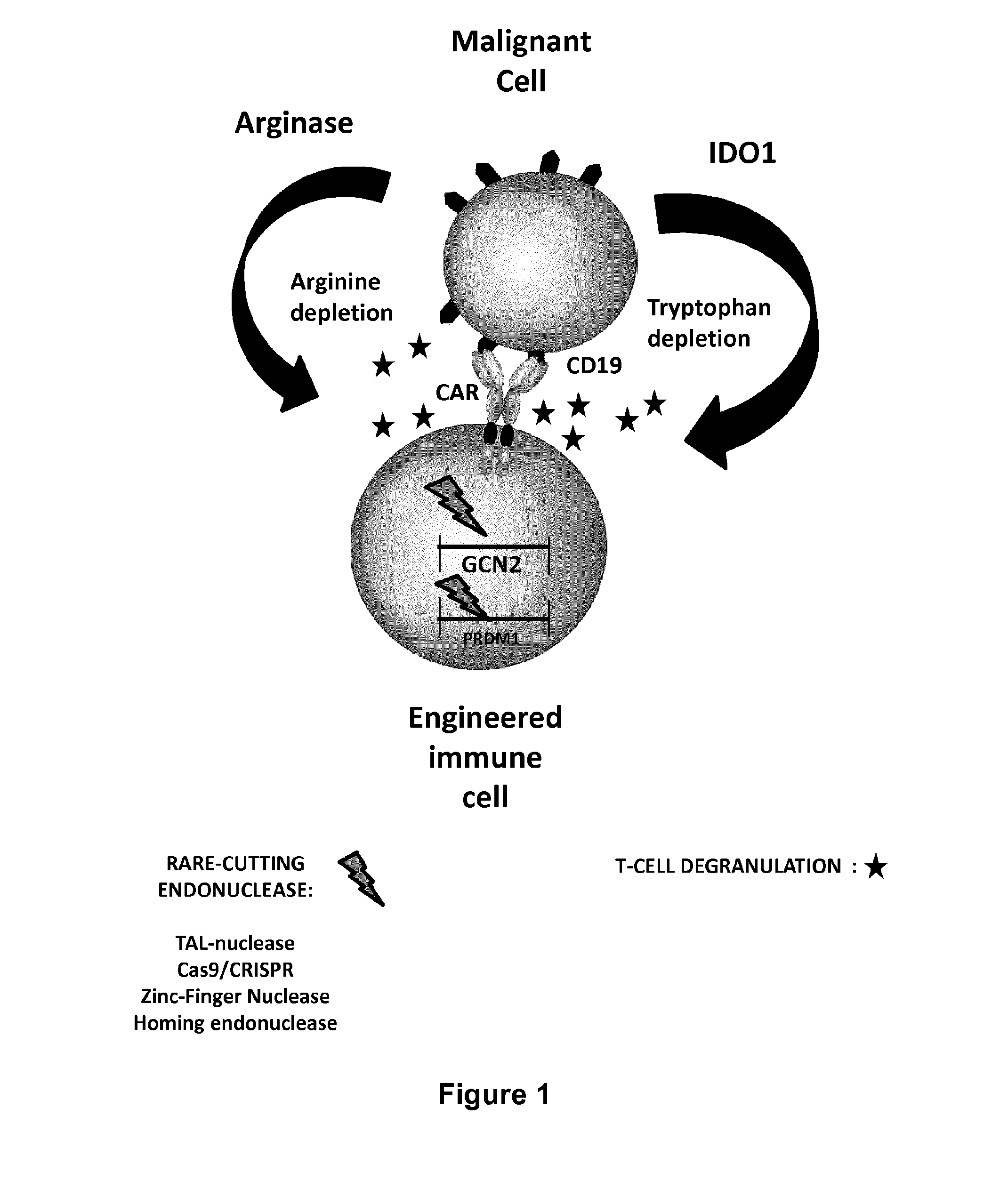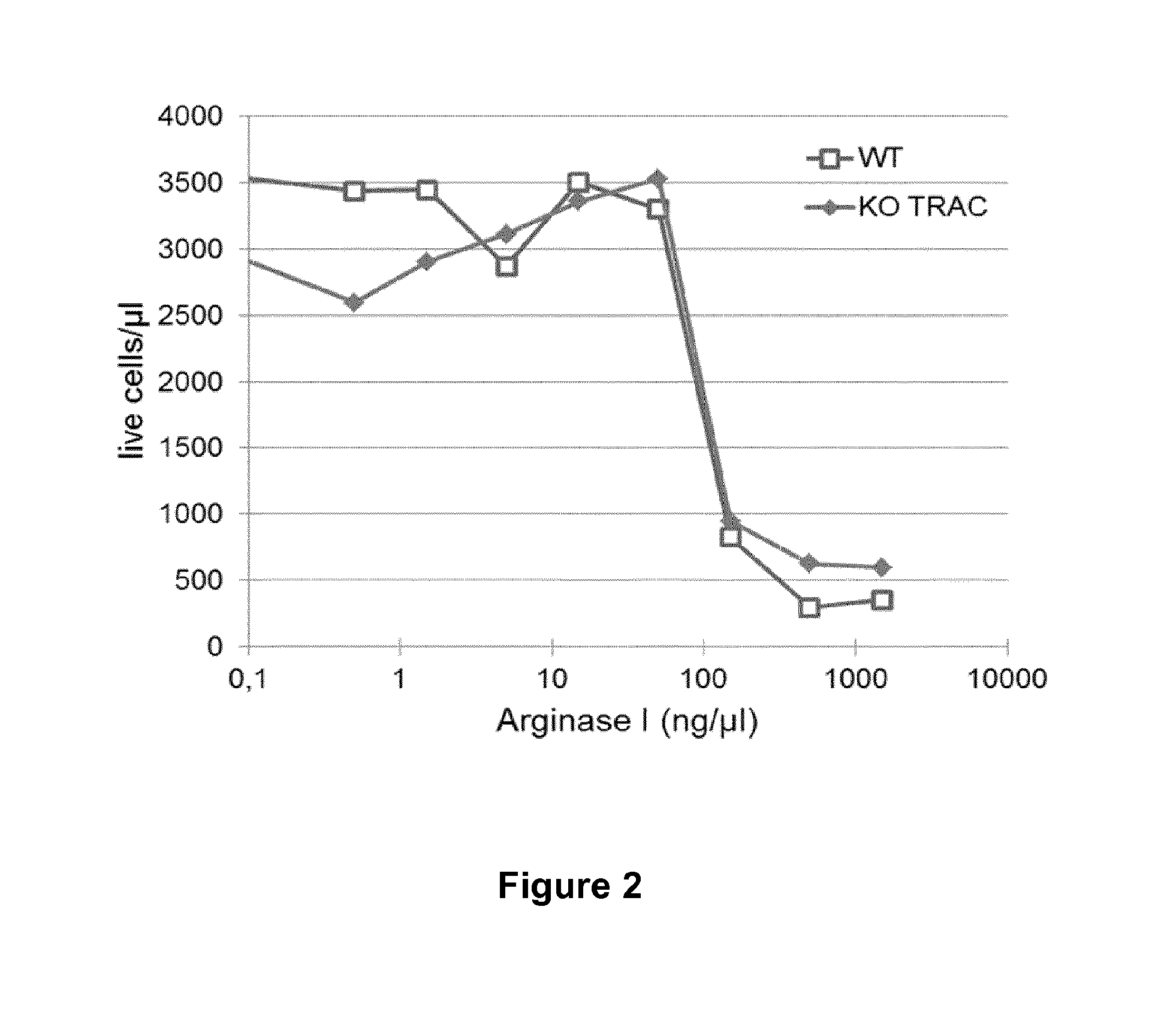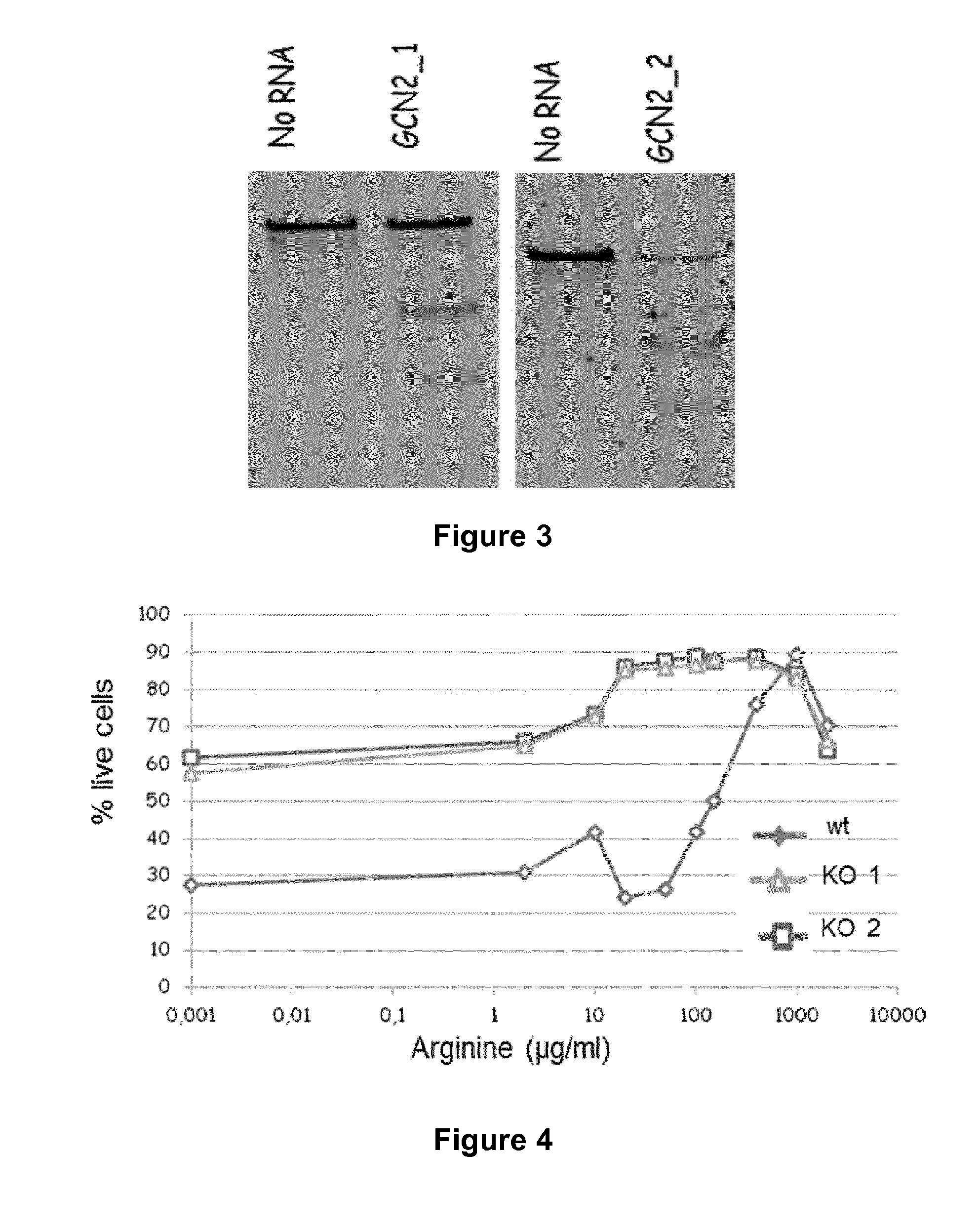Method for generating immune cells resistant to arginine and/or tryptophan depleted microenvironment
a technology of immune cells and microenvironments, applied in the direction of immunological disorders, antibody medical ingredients, transferases, etc., can solve the problems of inability to provide prolonged expansion and anti-tumor activity in vivo, dampen the immune response, etc., and achieve the effect of improving the immune response against tumors
- Summary
- Abstract
- Description
- Claims
- Application Information
AI Technical Summary
Benefits of technology
Problems solved by technology
Method used
Image
Examples
example 1
T-Cell Sensitivity to Arginase Activity
[0212]To verify that T-cells were sensitive to arginine deprivation by arginase I activity in their microenvironment, Xcico15 media complemented with 5% human AB serum and 20 ng / ml human IL2 (100 μl per well in a 96-well plate) was incubated with increasing concentrations of recombinant arginase I (0.5 to 1500 ng / μl).
[0213]After 3 days at 4° C., human T-cells that had previously been transfected (PulseAgile) with mRNA encoding a TRAC specific TALE nuclease or no RNA were resuspended in the arginase-treated media. After 72 hours at 37° C., cell viability was measured by flow cytometry. The results are depicted in FIG. 2.
[0214]As can be seen from FIG. 2, increasing concentrations of arginase, and thus decreasing concentrations of arginine in the media leads to a drastic decrease in viable T-cells. These results suggest that both T-cells treated with TRAC specific TALE nuclease (KO TRAC) and untreated T-cells (WT) are sensitive to arginine depriva...
example 2
GCN2 Disruption by Use of TALE Nucleases
[0215]Two TALE nucleases (GCN2_1 and GCN2_2) were designed to disrupt the GCN2 gene in human T-cells. mRNA encoding TALE nucleases targeting the human GCN2 gene were ordered from Cellectis Bioresearch (8, rue de la Croix Jarry, 75013 Paris). Table 2 below indicates the target sequence cleaved by the respective TALE nuclease.
TABLE 2 TALE nucleases targeting human GCN2 genetarget sequenceGCN2_1TGGATTTGAGGGTTAAATGCCCACCTACCTATCCAGATGTGTGAGTACA (SEQ ID NO: 3)GCN2_2TTGTAGGAAATGGTAAACATCGGGCAAACTCCTCAGGAAGGTCTAGGTA (SEQ ID NO: 4)
[0216]Human T-cells were transfected with mRNA encoding either of said TALE nucleases. Control cells were transfected without RNA. 3 days post transfection genomic DNA was isolated and subjected to T7 endonuclease assay to detect TALE nuclease activity. The results are depicted in FIG. 3.
[0217]As can be seen from FIG. 3, the presence of lower molecular bands compared to the sample without RNA transfection clearly indicated c...
PUM
| Property | Measurement | Unit |
|---|---|---|
| temperature | aaaaa | aaaaa |
| concentrations | aaaaa | aaaaa |
| concentrations | aaaaa | aaaaa |
Abstract
Description
Claims
Application Information
 Login to View More
Login to View More - R&D
- Intellectual Property
- Life Sciences
- Materials
- Tech Scout
- Unparalleled Data Quality
- Higher Quality Content
- 60% Fewer Hallucinations
Browse by: Latest US Patents, China's latest patents, Technical Efficacy Thesaurus, Application Domain, Technology Topic, Popular Technical Reports.
© 2025 PatSnap. All rights reserved.Legal|Privacy policy|Modern Slavery Act Transparency Statement|Sitemap|About US| Contact US: help@patsnap.com



